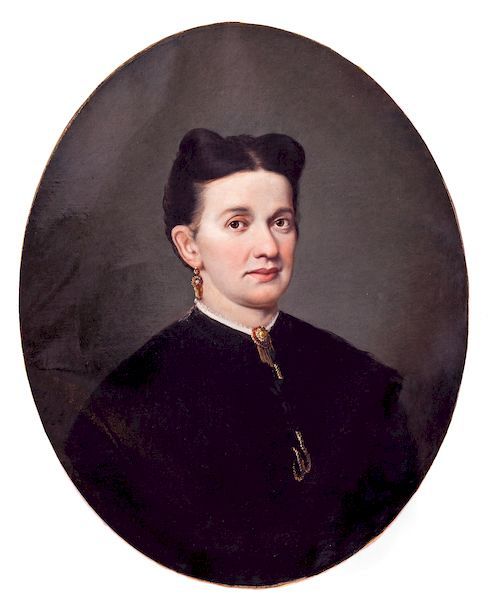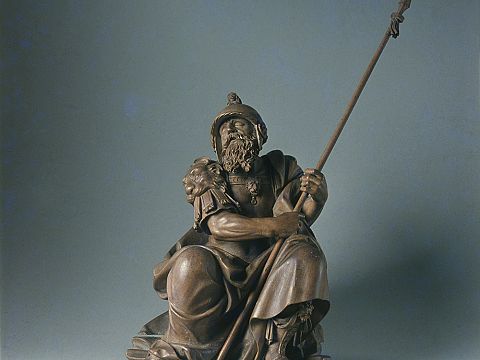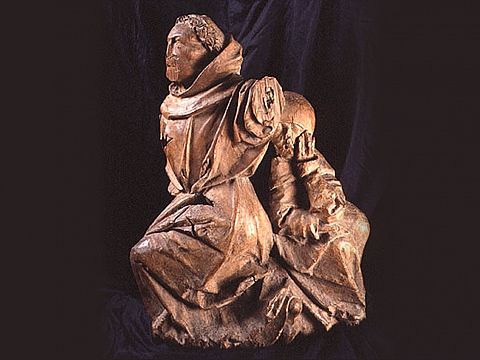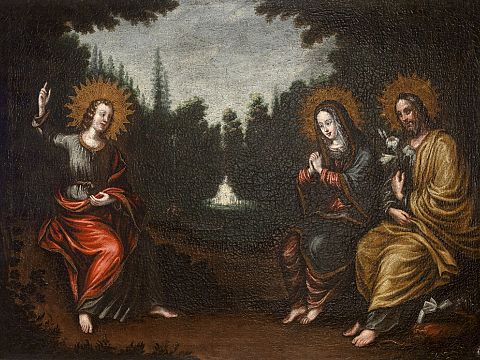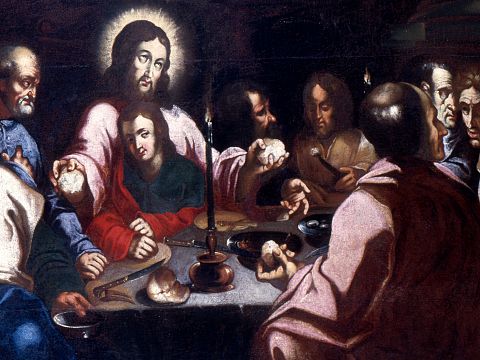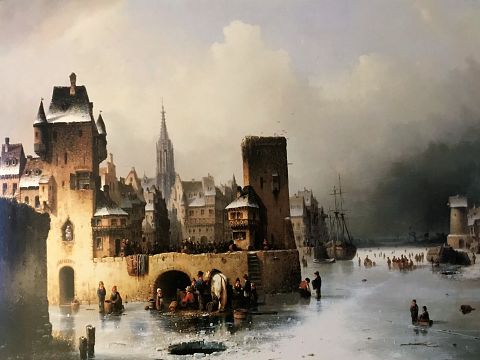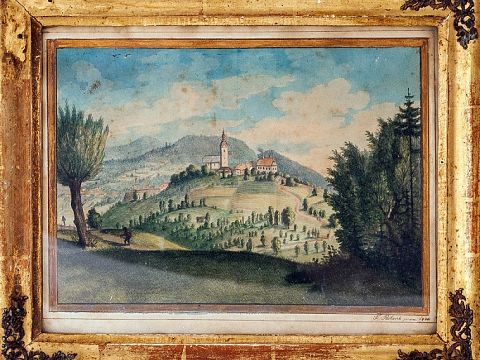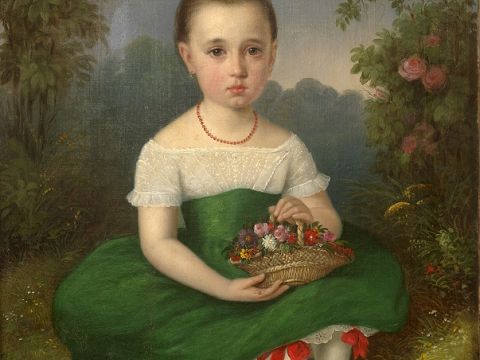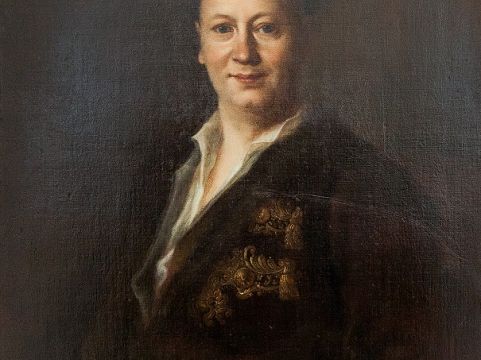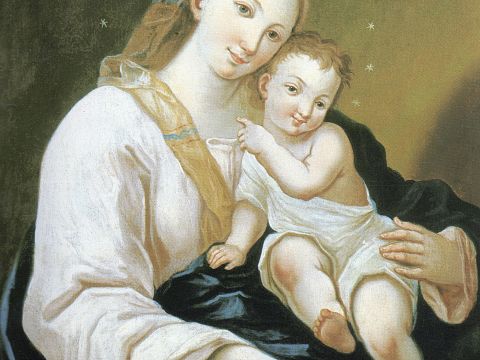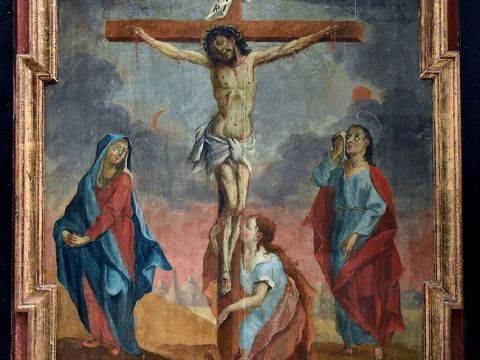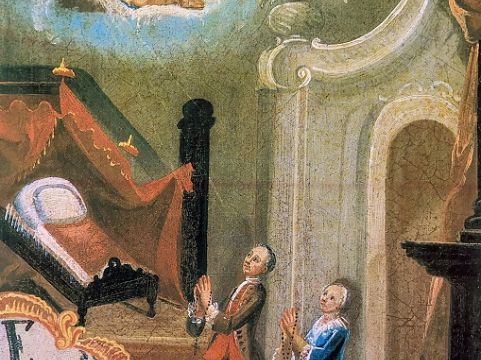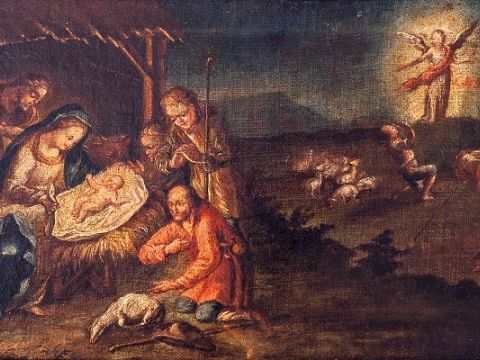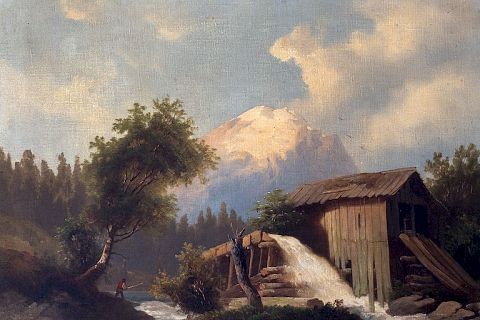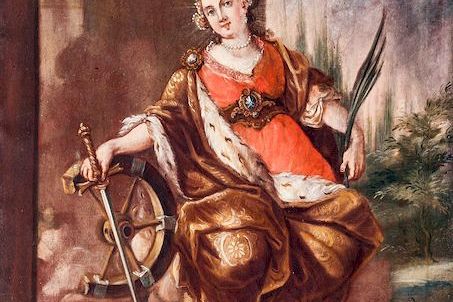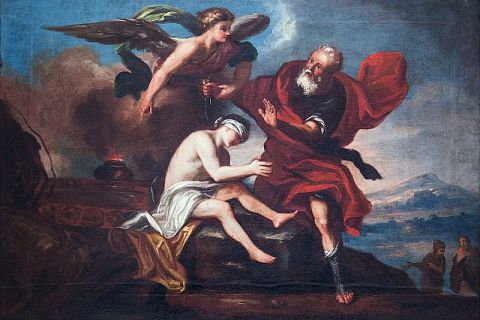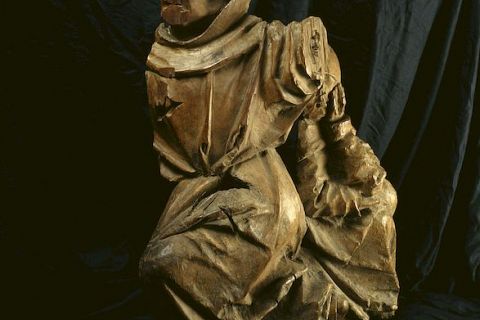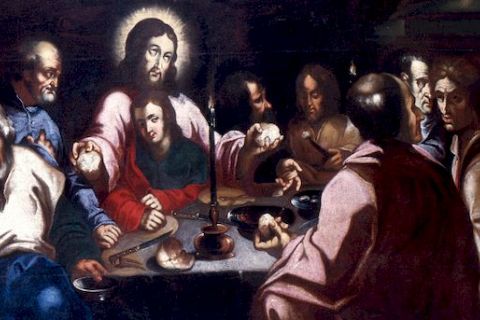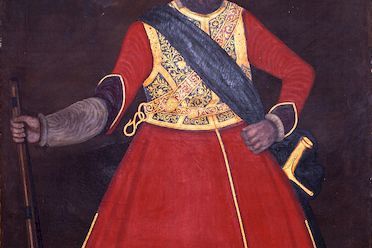- Info MM:K
Contact
Muzejska Pot 3, 1241 Kamnik, Slovenia
+386 (0)1 8317 662
info@muzejkamnik.siDŠ: 92474519
MŠ: 5095417000
TRR: SI56 0110 0600 0057 156Opening hours MM:K
Opening hours for visitors:
Tuesday-Saturday: 10.00 – 18.00,
Sunday, Monday and holidays: closedMuseum – Zaprice Castle and Miha Maleš Gallery are from 5.5. until 8.9. 2024 also open on Sundays from 10 a.m. to 2 p.m.
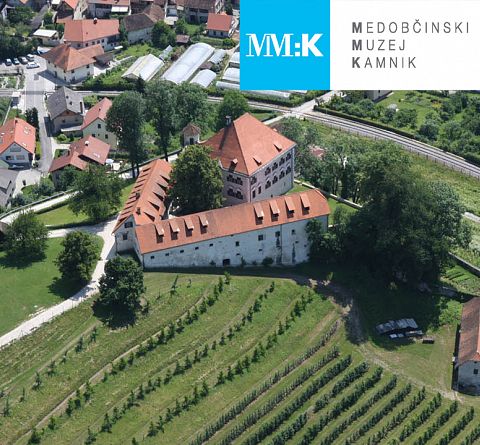
- Events & News
- Exhibitions
- Units
- Collections
- Education
- Shop
- About MM:K
Art history collection
The core and base of the art history collection are the older art works (paintings, statues, handicrafts). So the major part of this collection is from Sadnikar’s Collection. Amongst them are some well-known and already mentioned works of art, significant for learning about Slovenian and European arts, amongst the others the Gothic relief “Stigmatisation of St. Francis”, Renaissance statues ‘Guardians of the Holy Sepulchre’ from the 16th century, or the painting “Jesus preaching to his parents” from the 17th century. New objects have been acquired from private collections and other sources by being donated or purchased, thus the collection from the older artistic periods is expanded and complemented by the works of art of origin or provenance of the Kamnik region.
Contact:
Curator: Saša Bučan, historian of art, museum counsellor, sasa.bucan@gmail.com
Museum stories
The Guardians of the Holy Sepulchre
These two statues of the Guardians of the Holy Sepulchre are examples of the highest quality sculptures of the 16th century in Slovenia. The statues, young and old warriors, were probably once part of a bigger composition of the Resurrection of Jesus.
Stigmatization of St Francis
Relief, linden wood, polychromacy destroyed, 90th of the 15th century
Jesus' conversation with his parents
Jesus' conversation with his parents, unknown painter, middle of the 17th century, oil on canvas
The Last supper
The Last supper, unknown painter, first half of the 17th century, oil on canvas
Ludwig Hermann, The old Town with the frozen canal, 1852
In the 1850s, Hermann was especially interesting on Dutch and north German landscape, with old towns in different weather conditions. The painting was created in 1852, at a time when Hermann was painting in the Netherlands and was inspired by the Dutch and North-German landscapes of the 17th century.
Franc Pustovrh (Pustavrh), Sela near Kamnik, 1863
The characteristic romantic outline depicts the provincial motif from Sela near Kamnik. At the heart of the motif is a parish church with a bell tower and two buildings (parish) from the north side.
Carl Vogel, Girl, 1857
In the picture is a full-length depicted girl. The girl is sitting on the grass, a brighter, blue sky opens above her. She is dressed in a green dress with a narrow paw and a wide skirt, underneath the white lace lower skirt, and in a white transparent blouse with short sleeves and a wide cut. She had white socks with a red tape and narrow black shoes, reaching to the ankles.
Unknown painter, Portrait of a nobleman, late 18th century
In front of a darker background, a man, depicted to the waist and slightly turned to the right, stares at us happily. The face, part of the neck with the unbuttoned shirt and the left hand resting in the foreground stand out from the darker background.
Fortunat Bergant, Mary with a Child, c.1760
One such example is Bergant’s work Mary with a Child (c. 1760), which is kept in the Intermunicipal Museum in Kamnik. Bergant’s painting is thus characterized by a duality between elegant mastery and popular naivety, which still divides researchers today, and therefore opinions about the painter differ.
Laurenz Joseph Stachl, The Crucifixion, 1751
In the middle of the picture are Jesus on the cross and Mary Magdalene kneeling beside him, who hugs him and kisses his feet. Mary on the left with elegantly wavy clothes and posture pathetically expresses feelings of sadness, on the right St. John, stoically calm, wipes away the tears with a tablecloth.
Unknown painter, votive painting from Komenda, 1761
The votive image was created at a time when in Komenda the worship of St. Urban already greatly expanded. In 1752, the parish priest of Komenda, deserving cultural worker and educator Peter Pavel Glavar (1721-1784) acquired in Rome the relics of St. Urban martyrs .
Unknown painter, Birth of Jesus, around 1800
The painting is a popular work from around 1800. On our left we have the scene of the birth of Jesus, we see a wooden stable with Jesus, over which Mary bows, and next to her is Joseph standing and praying.



